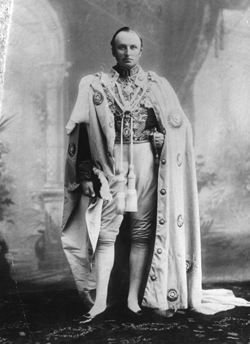Also attributed to Coco Channel as:"The money is always there, it's only the pockets that change"-Gertrude Stein,
"Money is money is money, it's only the pockets that change".
You may have seen this chart from Business Insider:

It doesn't tell us much other than the historical comparison, the title is definitely not what the data say, at least as far as London goes. Canadian, New Zealand and Australian prices were probably built on commodities, we'll know for sure if home prices follow (with a lag) commodity prices down.
London is different, for now. Should Anthony Burgess' Droogs take over the city we'll have to re-evaluate.
(and no smarty pants, I'm not saying "it's different this time")
Whether or not it's a bubble is a different call, what this piece hammers home is the point that price is set by the marginal buyer, sometimes known, at top-tick, as the 'to whom'.
The bubbliciousness of an asset can often be ascertained by asking "Is the marginal buyer margined?" because one point to distinguish bubbles from enthusiasm is borrowed money and right now the buyers of high-end London real estate aren't using OPM for the property purchase, however much they may be levered in their other affairs.
The bubbliciousness of an asset can often be ascertained by asking "Is the marginal buyer margined?" because one point to distinguish bubbles from enthusiasm is borrowed money and right now the buyers of high-end London real estate aren't using OPM for the property purchase, however much they may be levered in their other affairs.
A very intelligent piece by John Kay of the Financial Times:
Why London homes remain affordable – it is the buyers who change
No one can afford to buy a house in London any more.” Once again, rising house prices are a topic of conversation at metropolitan dinner parties. Over the past 50 years, figures from the Halifax show Greater London house prices rising relative to those in the rest of the UK by a modest but cumulatively significant 0.5 per cent per year.But people plainly can afford to buy houses in London. House prices can be high and rising if – and only if – people can afford to pay these prices. Some people who used to be able to afford central London house prices are now unable to do so, while others who used not to be able to afford them – or chose not to afford them – can now do so. If prices are rising, it is because the latter group outnumber the former. What has changed is not housing but the backgrounds of the people who live in these homes and their sources of wealth.Carlton House Terrace is possibly the most desirable address in London. The street overlooks The Mall, the approach road to Buckingham Palace. A house in Carlton House Terrace is at present on the market with a reported asking price of £250m. If that price is achieved, the house would be the UK’s most expensive property. The current owner is thought to be a Middle Eastern prince.Two doors away is the London residence of the Hinduja brothers, scions of the family-owned, Indian-based industrial and financial conglomerate. They have spent hundreds of millions of pounds on the most opulent of restorations. Most of the rest of the street is occupied by bodies which benefit from the favour of the freeholder, the Crown Estate. The British Academy and the Royal Society are on opposite sides of the steps leading down to The Mall. In a glorious, if incongruous, conjunction the Turf Club sits next to the Royal Society.
In the 19th century, all properties in the street were private residences. Some occupants were politicians – Lord Palmerston and William Gladstone both lived in Carlton House Terrace. So did Baron Stockmar, the shadowy counsellor to the young Queen Victoria. But the majority of residents were aristocrats whose names have faded into obscurity.Democracy chose a different type of politician, and the power and wealth of the British aristocracy waned. In the 20th century Carlton House Terrace took on a more commercial tone. One resident was Weetman Pearson, 1st Viscount Cowdray, the architect of the Pearson Group – the company which today owns the Financial Times, but was then a global infrastructure business which built the rail tracks under New York’s East River. His neighbours included George Stephen, the Scots-Canadian financier of the Canadian Pacific Railway; Harry Gordon Selfridge, who established the eponymous department store; and Lord Revelstoke, of the Baring banking family. George Nathaniel Curzon, the grandest of India’s viceroys, returned from the subcontinent to become the terrace’s most superior resident, although he never accomplished his real property ambition – a move to 10 Downing Street.

Weetman Pearson ©NPG
A home in Carlton House Terrace is the ultimate “positional good”. This is a term coined by Fred Hirsch in an insightful work titled Social Limits to Growth (1976). Economic growth is associated with increased availability of most commodities, but for some the absolute supply is fixed. Beautiful landscapes, paintings by Rembrandt. Properties in Carlton House Terrace and other prize London locations such as Belgravia’s Eaton Square, Kensington’s Pelham Crescent, and Hampstead’s Bishops Avenue. The staff needed to service grand properties are also positional goods. The positional good is one which by its nature can only be available to a few people.The price of positional goods will normally rise faster than incomes. People aim to spend more of their income on positional goods as they become richer, but only a few can ever realise these ambitions....MUCH MORE
Previously:

